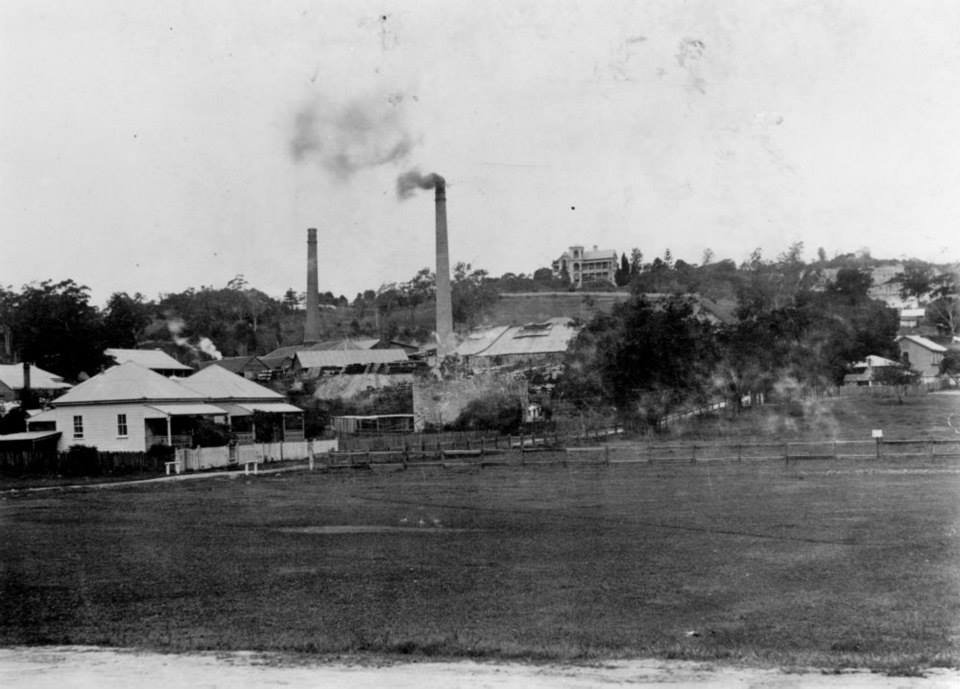The Teapot
From time to time, we get a visitor who wants to give us a gift pertaining to local history or events. For example, Warren delivered us six boot-shaped beer glasses from the old Spaghetti Emporium on Caxton Street (previously the Morris Boot Factory and now, the Paddington Skate Park). Genean brought us some vintage Girl Guide glasses and others have donated history books to our library. We have framed pictures of local scenes that have been drawn by urban sketchers. All around us are examples of how our community can see what we’re trying to achieve at the Paddington Hub, and we are so grateful!
Today we had a visit from Paddington local, Mike Hilburger - a professional photographer, avid historian, antique tool collector, pickle-maker, and all-round top bloke! We love the beautiful pictures of Paddington and surrounds he shares on social media, and have often visited his shop, The Urban Lumberjack Tool Co., inside Empire Revival, to buy collectables from him. He recognised some of his collection when he came to visit, actually!
Mike and his wife, Liz, are kindred spirits to us here at Paddington Then & Now… their love for antiquities is mostly about the stories behind the rustic items they find… not just their history, but the actual discovery after an exciting hunt. Over the years, they’ve visited ancient dump sites, country barns, swap meets, and even a few dodgy sheds!
In 2011, they turned their hobby into a business, by selling some of their finds at Vintage Fairs, and later, their little shop, Hobohemia, on Given Terrace, Paddington, next to Presents of Mind. In 2021, Hobohemia and Urban Lumberjack set up shop in Empire Revival.
Hobohemia
(Pic courtesy of Weekend Edition, 2013)
If any object they find has a story to tell, then Mike and Liz are interested. Like us here, their passion is to bring to light the stories they uncover for others who love the same things. Hence Mike’s visit to us today! He wanted to gift us a teapot. Not just any old teapot… THIS teapot!
It was found by a colleague of Mike’s, who loves to dig in the dirt at historic dump sites in Brisbane, looking for glass bottles and other objects of interest. This one was discovered in a drainage dig where Frew Park stands now, and Mike thinks it might have been locally made at Campbell’s Pottery in Albion, around the turn of last century.
James Campbell (1830-1904) was a Brisbane timber merchant, who arrived here from Scotland in 1853 and became the founder of the hardware firm, James Campbell & Sons. He’d completed his trade as a plasterer in his home country before emigrating to Queensland under the patronage of John Dunmore Lang, a Scottish minister who brought valuable migrants with trades to the colonies of NSW and Queensland in the 1850s.
In Brisbane, Campbell initially sold building materials imported from Sydney, before starting a new business called City Lime, Cement and Plaster Stores. Eventually he was providing many of the materials needed for constructing buildings, including timber, bricks, cement and pottery which were made locally, along with imported items.
From the early 1860s, Campbell was operating lime kilns at Breakfast Creek and Lytton using shells and coral collected from Moreton Bay. Around 1880, he established the Langshaw Marble Lime Works at New Farm. Campbell purchased a white sandstone quarry at Albion from John Petrie and built a brick and pottery works immediately north of Crosby Park.
Campbell's Pottery at Albion, 1908. House on the hill is 'Donatello' which was purchased in 1910 by the Sisters of the Sacred Advent who had established a school for girls at Nundah. They moved from Nundah to Toorak House and then to 'Donatello' where the school known as St Margaret's Anglican Girls School is still operating.
(Pic: Lost Brisbane Album, Facebook)
The teapot might also come from Bendigo Pottery… Australia’s oldest working pottery, started by George Duncan Guthrie (1828–1910), a Scottish settler in the 1850s. The potters at Bendigo used a lot of the darker brown drip-glazes at the turn of the last century, and the pattern around the top was similar to their creations, but there’s no particular mark underneath the pot to say where it was made, just the number 30.
If anyone out there recognises the design or style of this teapot, and could help us with placing it in Brisbane’s history, that would be great! In the meantime, we will enjoy looking at our new teapot, wondering who was soothed by the thousands of cups of tea it poured, and what were the stories they shared while they drank.






